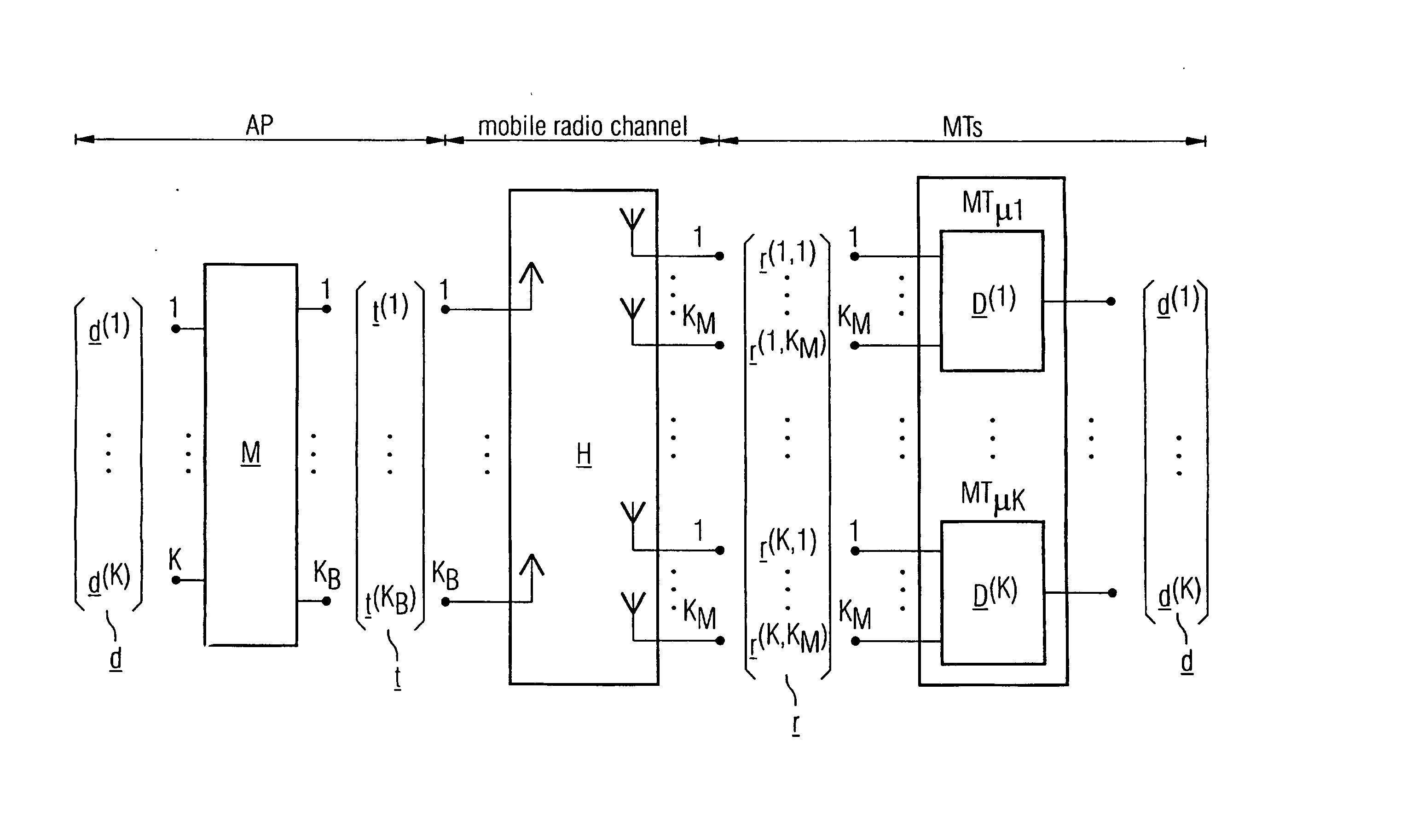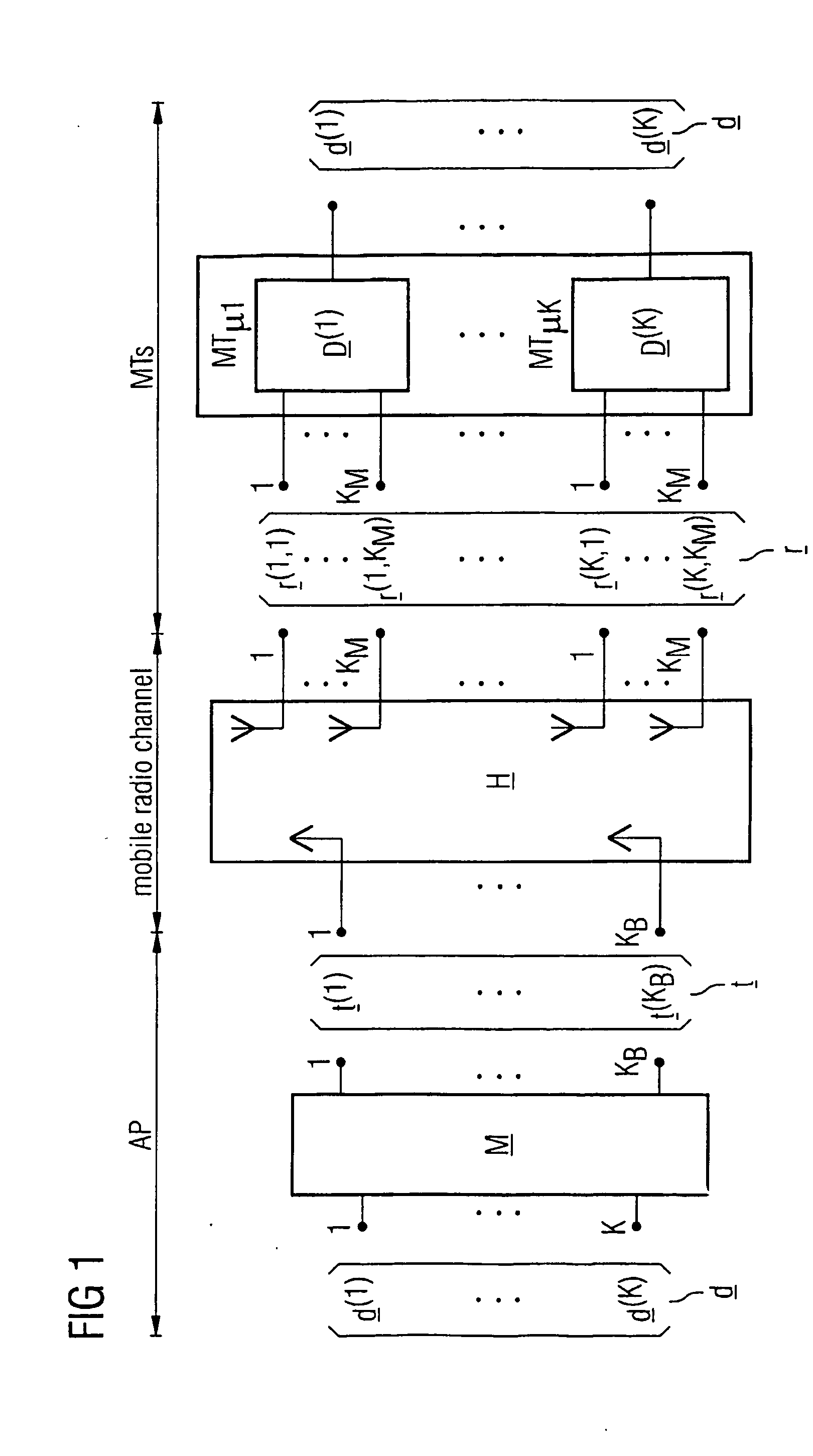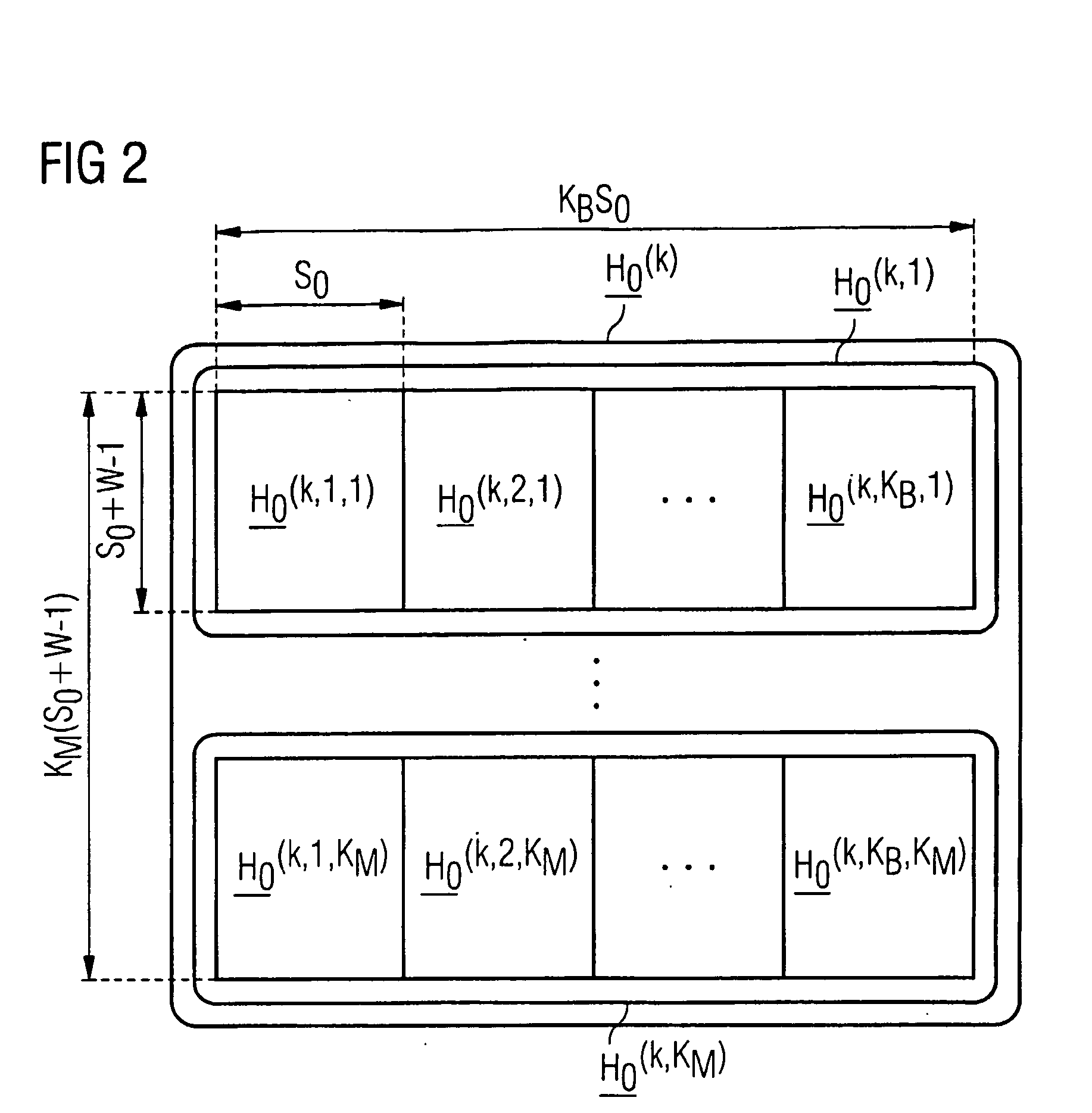Method for transmitting information in a mimo radio communication system and radio communication system
a radio communication system and radio communication technology, applied in the direction of spatial transmit diversity, transmitter/receiver shaping network, modulation, etc., can solve the problems of interference distorting transmit signals, affecting the reception of transmitted data, etc., and achieve the effect of detecting transmitted data at the receiver station with a very expensive method
- Summary
- Abstract
- Description
- Claims
- Application Information
AI Technical Summary
Benefits of technology
Problems solved by technology
Method used
Image
Examples
Embodiment Construction
[0045] Joint Transmission (JT) is a highly promising transmission method for the downlink [1, 2, 3] which is proposed for mobile radio systems using the hybrid multiple access method TDMA / CDMA. With JT, the transmission signals are advantageously generated jointly for all receiver stations MT. JT is based on prespecified demodulators, wherein on the basis of the characteristics of these demodulators and the channel pulse responses, the modulator in the transmit station AP is defined a posteriori so that intersymbol interference (ISI) and Multiple Access Interference (MAI) are completely eliminated. To date, investigations into JT have only taken account of multi-element antennas at the transmit station AP. Statistical investigations [3] have revealed the benefit of transmit antenna groups. The present invention relates to JT for transmission systems with a number of subscribers, where multi-element antennas are used both at the transmit station AP and at the receiver stations MT. A ...
PUM
 Login to View More
Login to View More Abstract
Description
Claims
Application Information
 Login to View More
Login to View More - R&D
- Intellectual Property
- Life Sciences
- Materials
- Tech Scout
- Unparalleled Data Quality
- Higher Quality Content
- 60% Fewer Hallucinations
Browse by: Latest US Patents, China's latest patents, Technical Efficacy Thesaurus, Application Domain, Technology Topic, Popular Technical Reports.
© 2025 PatSnap. All rights reserved.Legal|Privacy policy|Modern Slavery Act Transparency Statement|Sitemap|About US| Contact US: help@patsnap.com



